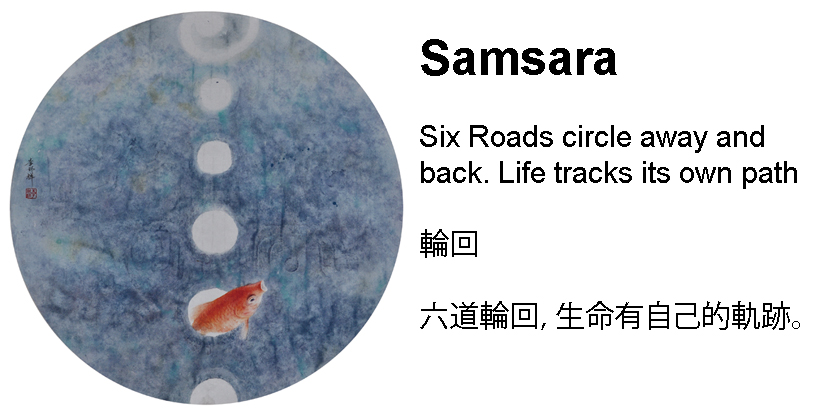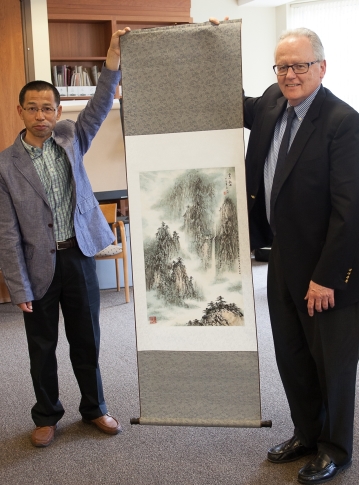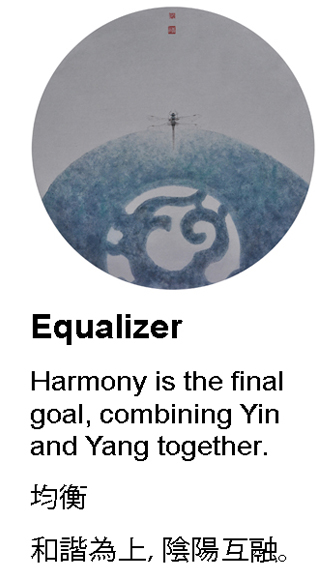“Heaven the Equalizer” Paintings Link Humanity and Nature

Chinese artist Linxiang Li traveled from Shanghai to Boston with one goal in mind – to share his inspirational paintings.
His thought-provoking exhibit, Heaven the Equalizer, shows a contemplative artistic approach as Li uses the vivid designs of birds, beasts, fishes and insects seen in classical Chinese bronze ware, allowing the figures to reveal their inner nature.
The ancient Chinese believed that bronze ware functioned as a magical tool, connecting heaven, earth and human beings. For as long as he can remember, this concept has inspired Li’s paintings.
“My work is always focused on the connection between humanity and nature,” he said during an opening reception for Heaven the Equalizer. “My goal is to express that humans and nature can co-exist harmoniously.” Suffolk student Siyuan Huang, who also calls Shanghai his home, served as Li’s interpreter.

Li presented a Chinese scroll painting to Suffolk President James McCarthy, which the president accepted on behalf of the Rosenberg Institute for East Asian Studies, cosponsor of the exhibit with the University’s Mildred F. Sawyer Library. His artwork will be on display through May 29 at the Sawyer Library in Suffolk’s Stahl Center, 73 Tremont St., second floor. The exhibit is free and open to the public.
“Linxiang Li represents the most contemporary interpretation of traditional Chinese painting techniques, including the use of rice paper that absorbs the colors so well,” said Professor Ronald Suleski, director of Rosenberg Institute for East Asian Studies. “But what he paints is meant for psychological and philosophical speculation. The viewer is challenged to understand the symbolism of the painting, even while appreciating the subtle colors and flowing lines of the composition.”
Li’s paintings have been shown in Europe, Canada, Australia and Shanghai. His exhibit at Suffolk comes as his wife, Xiaoli Liu, is engaged as a visiting scholar in the History Department.
“It is a great honor to be here and share my work that brings traditional and non-traditional Chinese painting techniques together,” he said.

While a picture may be worth a thousand words, Li describes his in just a few. Among the titles and inspiring words that accompany his artwork are:
- Dust Seal – Everything is sealed by dust; for we last forever.
- Looking into Oblivion – The odds of meeting you in one thousand years are only one time, and I forget you afterwards.
- Equalizer – Harmony is the final goal, combining Yin and Yang together.
“I could see the traditional Chinese aspect in it, as well as the modern elements,” said Pat Moriarty, a senior majoring in Asian Studies, as he viewed Li’s work. “The colors seem more modern, while the scrolls are definitely more traditional.”
"The sense of tranquility is projected in all of the images; it’s so easy and peaceful to view,” said. J.P. Encarnacion, a junior majoring in psychology with an Asian Studies minor. “The words are very moving and give you a clearer image of what the painting is all about.”



